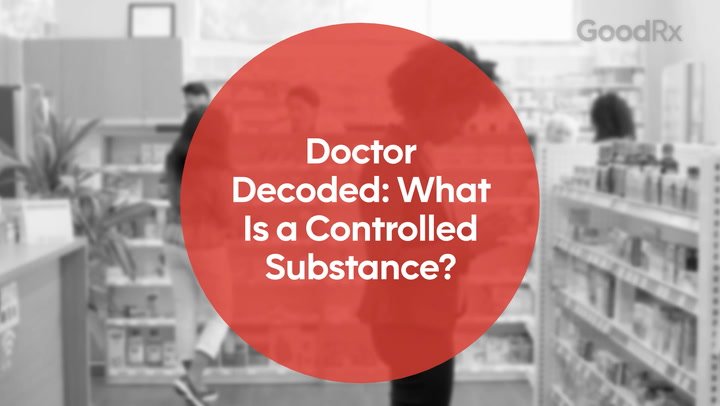
11 Suboxone Side Effects to Know About
Key takeaways:
Suboxone (buprenorphine / naloxone) is a combination medication that treats opioid use disorder. Though it can cause some side effects, the benefits often outweigh the risks.
Common Suboxone side effects include mouth irritation, headaches, and nausea. Constipation, dizziness, and opioid withdrawal symptoms can also occur.
Serious potential Suboxone side effects include liver damage, misuse, and overdose. Take Suboxone exactly as prescribed to help avoid these risks. Additionally, do not combine Suboxone with other medications that can cause overdose, such as benzodiazepines.
Table of contents

Suboxone is a combination medication that treats opioid use disorder (OUD). It contains two medications: buprenorphine and naloxone. Buprenorphine reduces withdrawal symptoms and cravings, while naloxone is added to lower the potential for misuse. Suboxone is considered one of the most effective treatments for OUD.
It’s normal to have questions about the risks associated with Suboxone. Here, we’ll discuss in detail 11 Suboxone side effects and risks to consider if you’re prescribed the medication.
Note: Suboxone and Zubsolv are brand-name buprenorphine / naloxone sublingual products. Both brand-name products are available as generic medications. In this article, we’ll refer to buprenorphine / naloxone products collectively as Suboxone, since this medication is well known.
Suboxone side effects at a glance
Most Suboxone side effects are due to the buprenorphine component. In fact, very little naloxone is absorbed by the body when it’s taken as directed. Naloxone is added to reduce the potential for someone to misuse Suboxone. However, there’s some debate as to whether naloxone actually has the ability to do this.
Some of the more common Suboxone side effects are:
Mouth irritation, burning, or numbness
Headaches
Body aches and pains
Drowsiness
Dizziness
Mental impairment
Sweating
Nausea and vomiting
Constipation
Serious Suboxone side effects include:
Dental problems
Very low blood pressure
Low adrenal hormone levels
Heart rhythm problems
Liver damage
Misuse
Opioid withdrawal symptoms
Overdose
Withdrawal in newborns who were exposed to Suboxone in the womb
Extreme drowsiness leading to slowed breathing, accidents, or injury
Despite its potential side effects, Suboxone is usually well tolerated and the benefits generally outweigh the risks.
The best treatment for opioid use disorder (OUD): A treatment plan that combines medication and therapy, called medication for opioid use disorder (MOUD), is the gold standard for treating OUD.
How does Suboxone work? Learn how this partial opioid agonist treats OUD.
Comparing first-choice medications for OUD: Learn about the differences between Suboxone and methadone (Methadose) — the most commonly used, and most studied, medications for treating OUD.
1. Mouth-related problems
Suboxone is dissolved under the tongue. This can cause discomfort, including a burning sensation and numbness in the mouth. More seriously, the FDA has issued a warning about severe dental problems related to Suboxone. These potential problems include cavities, mouth infections, and even tooth loss.
You can take steps to reduce your risk for dental issues related to Suboxone, such as:
After the tablet or film has fully dissolved, take a large sip of water. Swish it gently around your mouth, then swallow. This keeps Suboxone from staying in your mouth.
Wait at least 1 hour before brushing your teeth to prevent tooth damage.
Schedule regular checkups with your dentist during treatment. This will help you catch any problems before they worsen.
2. Headaches
Headaches are the most common Suboxone side effect. General aches and pains are also often reported. If you experience headaches with Suboxone, consider trying some basic strategies for minimizing them, like drinking enough water, exercising, and doing breathing exercises or meditation. You can also talk to your pharmacist about over-the-counter (OTC) pain medications, such as acetaminophen (Tylenol) or ibuprofen (Advil).
If you have headaches that are persistent or impact your daily life, let your prescriber know. They may recommend prescription headache medications.
3. Drowsiness and Dizziness
Suboxone can cause drowsiness and dizziness. So it’s recommended to avoid driving and doing other activities that require alertness, especially when you first start taking Suboxone or after a dosage increase. Once you know how Suboxone affects you, you and your prescriber can decide if it’s safe to resume these activities.
Most people develop a tolerance to these side effects over time. But if you continue to experience drowsiness or dizziness, talk with your prescriber. Managing these side effects is particularly important for older adults, who are more susceptible to injuries from falls.
Keep in mind that dizziness can also be a sign of low blood pressure, heart rhythm problems, or adrenal insufficiency. We will discuss these potential side effects more below.
4. Nausea and vomiting
Nausea, vomiting, and an upset stomach can all happen with Suboxone. This is one reason it’s important to take Suboxone correctly.
Suboxone tablets and films should be placed under the tongue until fully dissolved. The films can also be placed against the inside of the cheek until fully dissolved. Neither formulation should be chewed or swallowed whole. Taking Suboxone correctly will help you get the most from the medication and help prevent nausea.
If you’re taking Suboxone correctly but still experiencing nausea, talk to your pharmacist about whether there are OTC nausea medications that could be good options for you.
5. Constipation
Constipation is a common Suboxone side effect. This is a common side effect of most opioids, and buprenorphine is considered a partial opioid as it binds to opioid receptors. Since it binds to these receptors, we see this side effect occur with Suboxone, too.
Unfortunately, constipation from Suboxone doesn’t always go away on its own. You may experience this side effect the whole time you’re taking Suboxone. And lifestyle changes and medications may be needed to prevent or manage it.
Staying hydrated, eating fiber-rich foods, and exercising regularly can help with constipation. OTC laxatives can also help, but some are better than others for Suboxone-induced constipation. Common options include docusate (Colace) and senna (Senokot, Ex-Lax). Talk to your pharmacist about which laxatives they recommend.
6. Low blood pressure
Suboxone can cause orthostatic hypotension. This is a drop in blood pressure that occurs when a person changes positions, like when going from seated to standing or getting out of bed. It could cause you to feel dizzy or light-headed, putting you at risk for falls and injuries.
Change positions slowly while taking Suboxone, especially when you first start taking it or if your dosage is increased. If you have symptoms that feel severe, speak to a healthcare professional as soon as possible. Dizziness can also be a sign of more rare Suboxone side effects like arrhythmias (abnormal heartbeats), and adrenal insufficiency (when the adrenal glands don’t produce enough hormones).
7. Abnormal heartbeat
Suboxone can raise your risk of long QT syndrome. Developing long QT syndrome is more likely if you already have heart problems or are taking other medications that also cause this side effect.
Long QT syndrome doesn’t always cause noticeable symptoms, but you may experience dizziness or heart palpitations. In severe cases, it can lead to torsades de pointes, a life-threatening arrhythmia. If you experience dizziness or heart palpitations, let your prescriber know immediately. If you faint or your symptoms feel severe, seek emergency care.
Be sure your healthcare team has your current medication list and is aware of your full medical history before starting treatment with Suboxone. They can help you check for possible drug interactions that may increase your risk of heart problems and assess your other health conditions, if needed.
8. Liver damage
There have been reports of liver damage in people taking Suboxone. Though, it’s not clear if the damage was caused by Suboxone itself or if other factors, like undiagnosed liver disease or viral hepatitis, were to blame.
Your prescriber will check your liver enzyme levels before you start taking Suboxone and during treatment. It’s possible for the medication to cause mild liver enzyme elevations. In most cases, this doesn’t cause major problems and improves over time. If your levels are significantly elevated, however, Suboxone may not be the best option for you.
9. Withdrawal
Opioid withdrawal can occur if your body becomes dependent on having opioids in your system and you stop taking them or reduce your dosage too quickly. Examples of opioid withdrawal symptoms include sweating, nausea, and diarrhea. Insomnia, anxiety, and irritability can also occur. Opioid withdrawal is rarely life-threatening, though it can be extremely uncomfortable.
There are two reasons you could experience opioid withdrawal with Suboxone:
If you take a Suboxone dose too soon after your last opioid dose: Suboxone should be taken several hours after your last opioid dose because it can block the effects of typical opioids. It’s usually recommended to wait at least 12 hours after receiving a short-acting opioid or at least 24 hours after receiving a long-acting opioid before taking Suboxone.
If you stop taking Suboxone abruptly or reduce your dosage too quickly: If you need to stop taking Suboxone, your prescriber will help you come up with a plan to taper off the medication over time. This may take several months or longer.
Although Suboxone can cause withdrawal symptoms for some people, it helps prevent withdrawal for most people who stop taking opioids. In fact, when compared to a placebo — a pill that doesn’t contain any medication — Suboxone is more effective at preventing opioid withdrawal.
It’s also important to note that newborns who were exposed to Suboxone in the womb can experience withdrawal symptoms. So let your prescriber know if you're pregnant before starting treatment with Suboxone. Although Suboxone is considered a first-choice medication for OUD during pregnancy, your healthcare team may need to monitor your baby more closely after you give birth.
10. Misuse
Suboxone is a controlled substance. This means that it carries a risk of dependence and misuse. But Suboxone is a Schedule 3 controlled substance, so it is less likely to cause misuse than Schedule 1 or 2 medications, like opioids.
Be sure to take Suboxone exactly as prescribed to help minimize your risk for misuse. If it doesn’t feel like the medication is helping with cravings or withdrawal symptoms, talk to your prescriber, as they may recommend increasing your dosage. But don’t make changes to your dosage without talking to them first. Self-medicating with extra medication or other substances can lead to dangerous side effects, like trouble breathing or overdose.
11. Overdose
Though rare, Suboxone can cause an overdose. This is more likely if you take too much Suboxone or combine it with medications like benzodiazepines, other opioids, or alcohol. These substances can also affect your breathing, making an overdose from Suboxone more likely.
Besides slowed breathing, symptoms of an overdose include having pinpoint pupils, being unable to speak or respond to questions, and having bluish skin, especially on the lips and fingertips. If you think you’re witnessing an overdose, administer naloxone (Narcan, Zimhi) or nalmefene (Opvee, Zurnai) if you have it. These medications can quickly reverse the effects of an opioid overdose and be life-saving. Narcan nasal spray is available OTC.
It’s a good idea to carry naloxone or nalmefene on you at all times if you or a loved one takes Suboxone or opioids. Additionally, keep Suboxone stored in a safe location away from other people’s reach, especially children. An overdose can occur if someone who isn’t used to having opioids in their system ingests Suboxone.
It’s also important to note that, over time, Suboxone lowers your tolerance to opioids. So if you start taking opioids again, lower dosages can cause an overdose.
Good to know: Although Suboxone contains naloxone, it cannot be used to rescue someone from an overdose. Only injectable naloxone or naloxone nasal spray products can reverse an overdose. Learn how to give naloxone with this GoodRx Health article.
The bottom line
Suboxone is a first-choice medication for treating opioid use disorder. Common side effects include mouth irritation, headaches, and nausea. Constipation, dizziness, and opioid withdrawal symptoms may also occur.
Serious risks include liver damage, misuse, and overdose. However, the benefits of Suboxone treatment very often outweigh the risks associated with the medication.
Why trust our experts?



References
American Health Packaging. (2021). Buprenorphine and naloxone - buprenorphine and naloxone tablet [package insert].
Cohagan, B., et al. (2023). Torsade de Pointes. StatPearls.
Kumar, R., et al. (2024). Buprenorphine. StatPearls.
Orexo US. (2023). Zubsolv - buprenorphine hydrochloride and naloxone hydrochloride tablet, orally disintegrating [package insert]. DailyMed.
RedPharm Drug. (2023). Buprenorphine and naloxone - buprenorphine and naloxone film [package insert].
Togioka, B. M., et al. (2024). Buprenorphine and naloxone. StatPearls.
U.S. Food and Drug Administration. (2022). FDA warns about dental problems with buprenorphine medicines dissolved in the mouth to treat opioid use disorder and pain.
Was this page helpful?
Related Articles
Browse medications
View AllResearch prescriptions and over-the-counter medications from A to Z, compare drug prices, and start saving.











